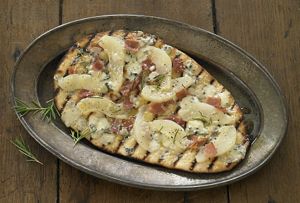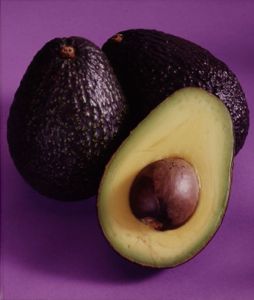Why Focus on Flatbreads?
 Though not new to the market by any stretch, flatbreads, particularly those that say “global,” are enjoying a revolution. A pastry chef-instructor at Kendall College in Chicago reports on the trend, making the case for need-to-know among culinary-arts and pastry/baking students as they embark on their careers.
Though not new to the market by any stretch, flatbreads, particularly those that say “global,” are enjoying a revolution. A pastry chef-instructor at Kendall College in Chicago reports on the trend, making the case for need-to-know among culinary-arts and pastry/baking students as they embark on their careers.
By Heidi Hedeker, CMB, MA/MSW
In the realm of baked goods, flatbreads don’t have a standard definition. Wheat flour is often the main ingredient, and just as often not. Flatbreads are leavened or unleavened. No nation on earth can claim to be the origin of flatbread (although the region that includes modern-day Iraq can take some credit), and no single flavor, color or texture is shared by all flatbreads. Some breads considered flatbreads aren’t even particularly flat. Or thin.
When you think of the lifestyle trends of the last several years, today we are basically nomads. More of the foods we eat are to go, and what is more nomadic than a flatbread? The origins of most of today’s flatbreads are in early agrarian society. Foods had to be simple enough for travel. That fits with our lifestyle today, because everything we do is portable.

 Technomic research reveals significant increased blueberry use across categories, suggests Gen-Y marketing opportunities.
Technomic research reveals significant increased blueberry use across categories, suggests Gen-Y marketing opportunities. The Research Chefs Association unveiled the latest in culinary arts and food science and technology in Portland, Ore., in March.
The Research Chefs Association unveiled the latest in culinary arts and food science and technology in Portland, Ore., in March. Which good fats to eat and which bad fats to avoid? There’s room for more education.
Which good fats to eat and which bad fats to avoid? There’s room for more education. The challenge of college includes managing multiple demands and a complex schedule, often for the first time as an adult. Something as simple as taking attendance in class can motivate students to not only stay in the course and program, but thrive.
The challenge of college includes managing multiple demands and a complex schedule, often for the first time as an adult. Something as simple as taking attendance in class can motivate students to not only stay in the course and program, but thrive.
 As culinary educators we have a unique opportunity to view student assessment differently—in a way that measures the ability to “demonstrate understanding” vs. the ability to memorize.
As culinary educators we have a unique opportunity to view student assessment differently—in a way that measures the ability to “demonstrate understanding” vs. the ability to memorize. Courtesy of Mercer Cutlery
Courtesy of Mercer Cutlery Imagine working side by side with a top caterer in Seattle, helping with the grape harvest for the oldest continuously operating, family-owned winery in California, or experiencing farm-to-table initiatives on a farm in Hawaii. These opportunities and others are available to women working in the food, beverage and hospitality industries through the 2014 Les Dames d’Escoffier International (LDEI) Legacy Awards.
Imagine working side by side with a top caterer in Seattle, helping with the grape harvest for the oldest continuously operating, family-owned winery in California, or experiencing farm-to-table initiatives on a farm in Hawaii. These opportunities and others are available to women working in the food, beverage and hospitality industries through the 2014 Les Dames d’Escoffier International (LDEI) Legacy Awards.  Emmi Roth USA, an award-winning producer of specialty cheeses, has announced the winner of its Grand Cru® Recipe Contest for Postsecondary Culinary Students. Caroline Ausman of Burlington, Wis., took top honors with her recipe for Manicotti en Croûte with Brandied Fig Sauce.
Emmi Roth USA, an award-winning producer of specialty cheeses, has announced the winner of its Grand Cru® Recipe Contest for Postsecondary Culinary Students. Caroline Ausman of Burlington, Wis., took top honors with her recipe for Manicotti en Croûte with Brandied Fig Sauce.